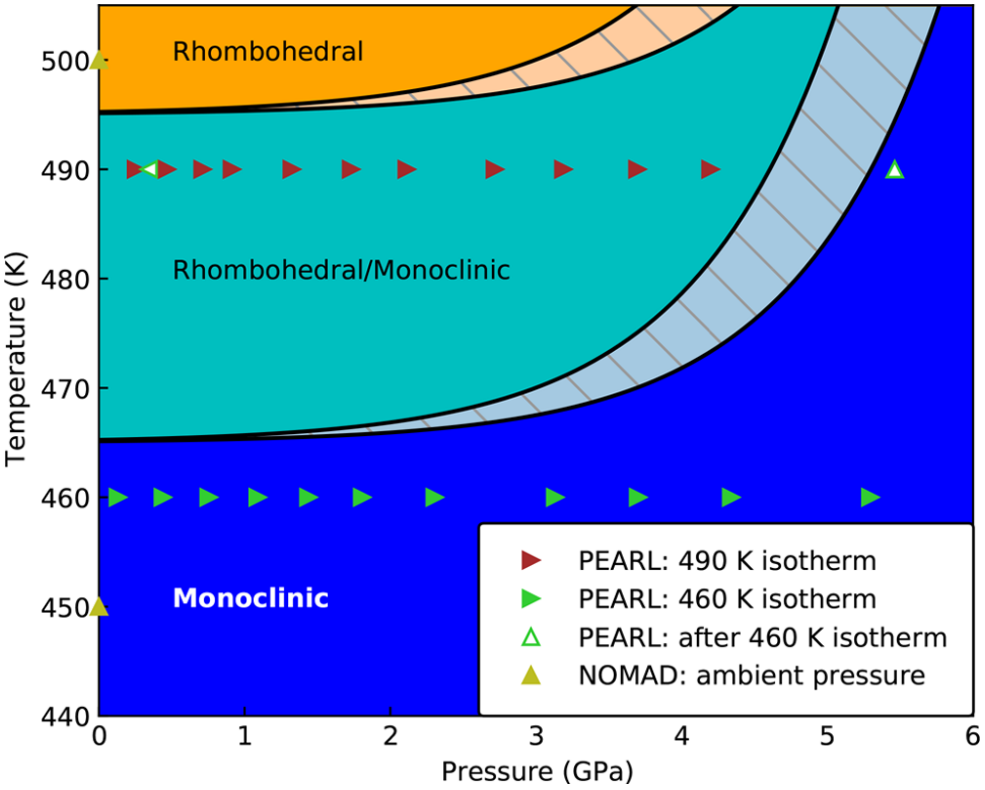Pressure Tuning the Jahn–Teller Transition Temperature in NaNiO2
Published in ACS Inorganic Chemistry, 2022
Liam A. V. Nagle-Cocco, Craig L. Bull, Christopher J. Ridley, and Siân E. Dutton.
Published on 3rd March 2022, and available here.
Story
During the first and second year of my PhD, a large part of my work was looking at the cooperative Jahn-Teller distortion in NaNiO2 as a way of trying to understand why such a distortion was missing from LiNiO2 when the two materials had so much in common. This led to the idea of trying to tune the Jahn-Teller distortion in NaNiO2 to see what would happen, and use this to hypothesise Jahn-Teller behaviour in LiNiO2. The most obvious tuning parameter is of course temperature, which I have explored in other projects. Using pressure as a tuning parameter was suggested to me independently by Prof. Siddharth “Montu” Saxena, during my first year viva, and my friend Dr Andrew Seel at Oxford over coffee at some point. I delved into the literature and saw that pressure had been used to study the Jahn-Teller distortion only a handful of times, and never on a triangular-latticed material with edge-sharing octahedra like NaNiO2.
I contacted a scientist on the main pressure beamline at ISIS Neutron and Muon Source, Dr Craig Bull, and we discussed the feasibility. Craig encouraged me to write a rapid access proposal, and within two months the experiment was happening. This was February 2021, and the COVID-19 pandemic was ongoing, so I couldn’t travel to the neutron source myself; I posted a sample to Craig, and while he and Dr Chris Ridley measured, 80 miles away in Cambridge I scrambled to perform Rietveld refinements of the diffraction data in real-time. When I saw the first diffraction pattern I freaked out at the number of diffraction peaks; the TiZr gasket leading to multiple ZrO2 phases, a lead pressure marker, alumina of the Paris-Edinburgh press, and even the pressure medium partially crystallised under certain conditions. It turned out to be no problem at all, but for a moment or two I thought something had gone terribly wrong.
Our study turns out to be the first variable-pressure study (to my knowledge) which looks at a Jahn-Teller material at multiple temperatures, and this allowed us to make an interesting finding: that application of pressure increases the Jahn-Teller transition temperature TJT. This happens at the same time as pressure reduces the magnitude of the distortion, by reducing the length of the longer bonds at a larger rate than the shorter bonds; this had been shown before for LaMnO3 and other materials. We also produced the first pressure-temperature phase diagram looking at Jahn-Teller behaviour in a material.
To build on this, the obvious steps to me seemed to repeat the study for LiNiO2, to see if pressure could nudge the local Jahn-Teller distortion (if indeed there is one; a controversial question) into ordering with a monoclinic distortion, and repeating the pressure study on NaNiO2 at a synchrotron. The case for repeating at a synchrotron is that the flux would be much higher, meaning much a smaller sample could be used. This would allow us to far exceed our paltry 6 GPa in this study. Time constraints in my PhD prevented me from pursuing the LiNiO2 idea, but in 2022 I was awarded beamtime at I15 at Diamond Light Source to study NaNiO2 to far higher pressures using a diamond anvil cell, opening up the possibility for a sequel to this 2022 article.

